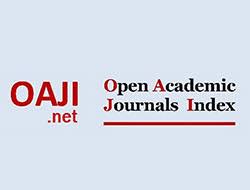EMPLOYMENT REJECTION EMAILS: A LINGUISTIC ANALYSIS AND PROFESSORS’ PERCEPTIONS
Abstract
The nature of the current academic job market engages many PhD holders in continuous search for employment. The competitive job market created by this causes recruitment committees to review an overwhelming number of materials submitted by each candidate. It is often the case that applicants are not alerted if their applications are not successful, which likely creates frustration. Although receiving a rejection letter may be considered an act of kindness, rejection can be a face-threatening act for both the addressor and the addressee. Therefore, special care needs to be given to writing an employment rejection letter. Despite this, the advanced electronic communication often utilized when communicating to applicants seems to create formidable challenges. With this in mind, this research aimed to identify how the rejection speech act is performed in emails addressed to PhD holders, and what professors thought about different types of rejection emails. Data for the former collected using fifty-eight authentic employment rejection emails and data for the latter were collected using a survey comprised of three emails, to which twenty professors responded. Results revealed that a variety of moves were employed in the emails. These included ‘subject-line’, ‘salutation’, ‘thank-you note’, ‘notification of process completion’, ‘compliment’, ‘justification’, ‘rejection’, ‘remedy’, ‘appreciation and/or thank-you note’, ‘good luck wish’, ‘valediction’, and ‘addressor’s name and/or affiliation’. Although these moves did not seem to have a fixed order, an overall structure was detected. On the other hand, data on professors’ opinions about different rejection emails showed that the content and how rejection is expressed impacted their perception of the self and the institution. Results are discussed and recommendations are offered to mitigate the effects of employment rejection emails which are highly face-threatening.
Keywords
Full Text:
PDFReferences
Aamodt, M. (2016). Industrial/organizational psychology: An applied approach (Eight Edition). USA: Cengage Learning.
Austin, J. L. (1962). How to do things with words. Oxford: Oxford University Press.
Barešová, I. (2008). Politeness strategies in cross-cultural perspective: Study of American and Japanese employment rejection letters. Olomouc, Czech Repubic: Palack University.
Brice, T. S. & Waung, M. (1995). Applicant rejection letters: Are businesses sending the wrong message? Business Horizons, 38(2), 59-62.
Brown, T. (1993). Unkind cuts: Rethinking the rhetoric of academic job rejection letters. College English, 55(7), 770-778.
Carmicheal, S. G. (2016). Writing a rejection letter with samples. Harvard Business Review Retrieved from https://hbr.org/2016/10/writing-a-rejection-letter-with-samples
Coady, J. & Huckin, T. (1997). Second language vocabulary acquisition: A rationale for pedagogy. Cambridge: Cambridge University Press.
Dhillon, K. (2015). 4 tips for humanizing your rejection letters. Retrieved from https://www.lever.co/blog/how-to-write-human-rejection-letters on 01.05.2017
Doss, D. A., Glover, W. H., Goza, R. A. & Wigginton, Jr. M. (2015). The foundations of communication in criminal justice systems. Boca Raton, FL: CRC Press.
Feinberg, R. A., Stanton, J. M. & Gable, M. (1996). Employment rejection and acceptance letters and their unintended consequences on image, self-concept, and intentions Journal of Business and Psychology, 11(1), 63-71.
Gilliland, S. W., Groth, M., Baker, R. C., Dew, A. E., Polly, L. M., & Langdon, J. C. (2001). Improving applicants’ reactions to rejection letters: An application of fairness theory. Personnel Psychology, 54(3), 669-703.
Granger, S. (2008). Learner corpora. In A. Ludeling & M. Kyto (Eds). Corpus linguistics: An international handbook Volume 1 (pp. 259-274). Germany: Mouton de Gruyter.
Grice, H. P. (1989). Studies in the way of words. Harvard University Press.
Heathfield, S. M. (2017, March 8). Candidate rejection letter: You can reject candidates kindly and professionally. Retrieved from https://www.thebalance.com/candidate-rejection-letter-1918887
Hurlburt, S., & McGarrah, M. (2016a). The shifting academic workforce: Where are the contingent faculty? Delta Cost Project at American Institutes for Research. Retrieved from http://www.air.org/sites/default/files/downloads/report/Shifting-Academic-Workforce-November-2016.pdf
Hurlburt, S., & McGarrah, M (2016b). Cost savings or cost shifting? The relationship between part-time contingent faculty and institutional spending. Delta Cost Project at American Institutes for Research. Retrieved from http://www.air.org/sites/default/files/downloads/report/Cost-Savings-or-Cost-Shifting-Contingent-Faculty-November-2016.pdf
Jaschik, S. (2016, April 4). The shrinking PhD job market. Inside HigherEd. Retrieved from https://www.insidehighered.com/news/2016/04/04/new-data-show-tightening-phd-job-market-across-disciplines
Kasper, G. (2000). Data collection in pragmatics research. In H. Spencer-Oatey (Ed.). Culturally speaking: Managing rapport through talk across cultures (pp. 316-369). London: Continuum.
Kok, A. M. (1993). “Such an unpleasant form letter”: A study of rejection letters to job applicants. (Doctoral dissertation). Utrecht University, Utrecht.
Moody, M.J. (2011). A study of Turkish and English refusal speech acts with a secondary examination for bi-directional language transferrals (Unpublished master’s thesis). Minnesota State University: Minnesota.
National Science Foundation. (2015). Doctorate recipients from U.S. universities. Survey of Earned Doctorates, National Center for Science and Engineering Statistics, Directorate for Social, Behavioral, and Economic Sciences.
Perlmutter, D.D. (2014, June 20). Why search committees go radio silent. Retrieved from https://chroniclevitae.com/news/572-why-search-committees-go-radio-silent
Pratt, S. (2015, March 15). How to: Reject a job applicant (without making an enemy!). Retrieved from https://www.socialtalent.co/blog/how-to-reject-a-job-applicant-without-making-an-enemy
Richards, J. C., Plat, J & Weber, H. (1985). Longman dictionary of applied linguistics. England: Longman.
Rossiter, T. (2013). Effective business writing in easy steps. Warwickshire: In Easy Steps Limited.
Searle, J. (1975). Indirect speech acts. In P. Cole & J. L. Morgan (Eds.). Syntax and semantics (pp. 59–82). New York, NY: Academic Press.
Sinclair, J. M. (1996). EAGLES. Preliminary recommendations on corpus typology. http://www.ilc.cnr.it/EAGLES/corpustyp/corpustyp.html
Synegal, M. K. (2016). Inspiration in small doses: Uplifting short stories and essays. Bloomington, IN: Abbott Press.
Tanck, S. (2004). Speech act sets of refusal and complaint: a comparison of native and non-native English speakers’ production. TESOL Working Papers, 2, 1-22.
Waung, M. & Brice, T. S. (2000). Communicating negative hire decisions to applicants: Fulfilling psychological contracts. Journal of Business and Psychology, 15(2), 247-263.
DOI: https://doi.org/10.22190/JTESAP1703423D
Refbacks
- There are currently no refbacks.
ISSN 2334-9182 (Print)
ISSN 2334-9212 (Online)



